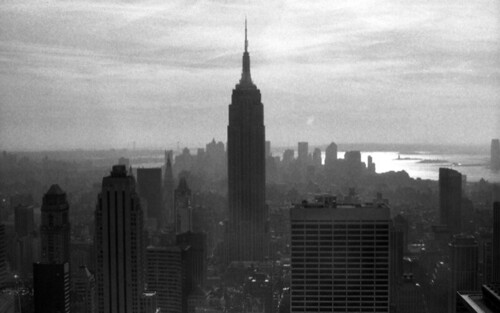
I have been following Alec Soth's very interesting blog about photography, politics, photography, ethics, photography - did I mention that his blog is interesting?
Recently he asked several questions in an area (building off an article in the New York Times on the architectural photographer, Julius Schulman, who lamented the loss of people in architectural photography) that has been in the front of my head this year - that of the role of people in documentary photos and from there, the role of photojournalism in the art world.
Here is the post, along with comments, including my own which I have inserted below. The parts of the conversation preceding my comments that interested me most were those responding to a Luc Delahaye photo of a dead Taliban soldier in a ditch which was recently priced for sale at $15,000 and the Robert Polidori photographs of the devastation wrought by Hurricane Katrina. I am not so interested in the ethics of photographing these images, but rather, I am interested in the ethics of their presentation and reception.
~~~~~>
I keep thinking of the scene in Woody Allen’s film where he walks into his kitchen and there is a wall-sized reproduction of Eddie Adams’ photo of the Vietnamese police sargeant executing a VC prisoner in the streets of Saigon. That photo had immediate, terrific impact when it appeared in the press, but Allen I think recognized that very quickly it became wall decoration and that the decoration included the emotional charge of the image as well as the charge from the lack thereof. Or as Susan Sontag said, “There is the satisfaction at being able to look at the image without flinching. There is the pleasure of flinching.”
I don’t begrudge photographers like Nachtwey, Delahaye, Haviv, Kratochvil, and others the right to make a living through their work. But I wonder if the presentation of these works in galleries and museums where only a small percentage of the public goes does not merely assuage the angst of inactivity in the face of tragedy among a group of people by offering them a view of the tragedy as a surrogate for solving or rectifying the contributing factors of that tragedy. What, for example, are people to say or do upon seeing Polidori’s photographs? Buy one? Make a donation? Vote for officials who will never allow this to happen again? Or as I overheard more than a few people say in the Met where several of his New Orleans series are/were hanging, comment upon the opulently rotten beauty of the photographs and head for the Picassos.
I think we can all understand the motivation of these photographers for selling their work - most have worked for relatively low pay in exceptionally dangerous, life threatening conditions. Haviv even had a contract on his life taken out by the infamous Arkan of the Serbian paramilitary group, Arkan’s Tigers. His photo of one of Arkan’s men kicking a dead or dying woman lying on the ground is a tremendously “impactful” image. Sontag has already commented on the graceful pose of the soldier as he delivers the blow. But this image is also for sale at the Museum of War Photography in Dubrovnik. If not to hang this over their couch, what then would be the motivation of the collector who would buy this? An investment?
I don’t know. Why would you buy Luc Delahaye’s photo for $15,000 and not send $15,000 to help build a school in Afghanistan? I can only guess that the surrogacy of these images is profound - that it represents a tremendous need to do something that grows out of the activating energy of the image itself. But even then - even if it comes from the need to do something, what is being done by buying an image such as this seems profoundly impotent. Perhaps that is our current condition - that we are condemned to an explicit awareness of tragedy around us and yet continually lack what is actually required to effect change through accurately directed action.
No answers here then. Just an open and ongoing struggle to understand…
No comments:
Post a Comment